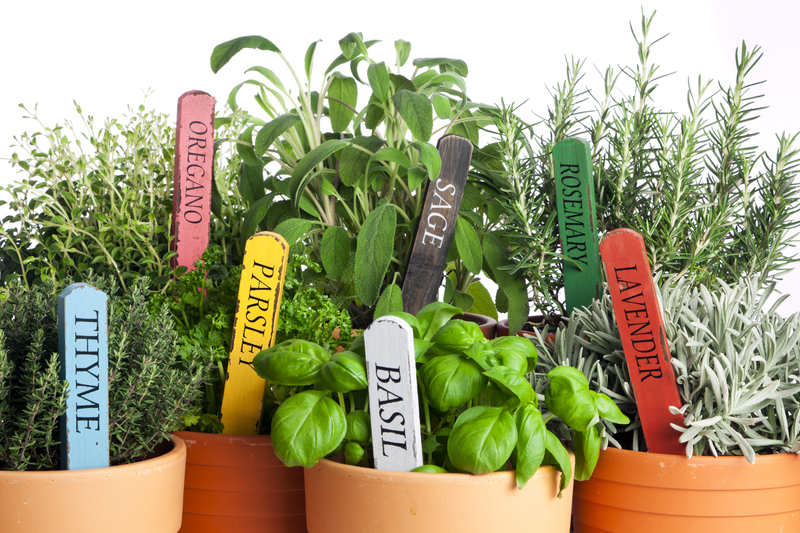From Bananas to Cannas: Exotic Plants That Grow Well in the UK
If you're captivated by lush jungles, vibrant blooms, and the allure of tropical landscapes, you may believe such gardens are only possible in far-flung climates. However, thanks to Britain's relatively mild and moist environment, a surprising number of exotic plants can thrive right here in the UK. From bananas to cannas and beyond, this article explores a wide variety of exotic plant species that will bring a splash of the tropics to your British garden. Discover reliable varieties, care tips, and ideas for creating your own paradise at home.
Why Grow Exotic Plants in the UK?
The UK's temperate climate--especially in southern and coastal regions--offers an excellent stage for cultivating many exotic plants. While some require a little winter protection or a spot of shelter, others are surprisingly hardy and low maintenance. Growing exotics adds dramatic foliage, vivid color, and unique textures to gardens. They make excellent feature plants, create microclimates, and attract pollinators such as bees and butterflies.
- Extended Growing Season: Many exotics bring interest well into autumn when traditional British blooms fade.
- Wildlife Benefits: Some exotic flowers are magnets for hummingbirds (in greenhouses), butterflies, and bees.
- Personal Reward: There's a unique satisfaction to cultivating lush, unusual plants that defy expectations in the UK's climate!

Best Exotic Plants That Grow Well in the UK
1. Bananas (Musa)
Bananas are the crown jewel of tropical-looking UK gardens. Musa basjoo, known as the hardy banana, is the top choice for British gardeners. Although it rarely produces edible fruit due to cooler summers, its dramatic leaves (up to 2m long) create an instant jungle vibe.
- Hardiness: Down to -10?C with protection
- Best Growing Conditions: Full sun, rich moist soil, and shelter from harsh winds
- How to Protect: In autumn, wrap the trunk ("pseudostem") in horticultural fleece and mulch the roots
2. Cannas (Canna indica & hybrids)
Cannas are glorious rhizomatous perennials with bold, paddle-shaped leaves and dazzling flower spikes in fiery shades of red, orange, pink, and yellow. Their foliage may be green, bronze, or even striped. In southern England, cannas often overwinter in the ground with a good mulch.
- Key Features: Vibrant blooms from midsummer to first frost, lush leaves for structure
- Care Tips: Plant out after last frosts; lift and store rhizomes in colder regions
- Companions: Try combining with dahlias and grasses for a real showstopper border
3. Bamboos (Phyllostachys & Fargesia)
Bamboos add vertical drama and movement. Fargesia varieties are clump-forming and non-invasive, making them popular for small gardens. Phyllostachys offers taller canes and is best in larger spaces. Both flourish in most UK gardens, offering year-round screening and the soothing sound of rustling leaves.
- Notables: Fargesia murielae ('Umbrella Bamboo'), Phyllostachys aurea (Golden Bamboo)
- Where to Plant: Moist, fertile soil; sun or part-shade
- Bonus: Excellent for screening or as windbreaks
4. Tree Ferns (Dicksonia antarctica)
No exotic garden is truly complete without a tree fern. Dicksonia antarctica is surprisingly hardy in the UK, provided the crown is protected during harsh frosts. The thick, fibrous trunk topped with majestic, arching fronds can reach 4m over many years, lending ancient rainforest vibes to sheltered gardens.
- Hardiness: To around -10?C (with good winter protection)
- Care Needs: Keep the crown moist, mulch heavily in autumn, and cover with sacking or straw in colder regions
- Position: Dappled or part-shade, humus-rich soil
5. Palms (Trachycarpus fortunei & Chamaerops humilis)
Several hardy palm species flourish outdoors in the UK. Trachycarpus fortunei (the Windmill Palm) is the most reliable, thriving even in northern gardens. Chamaerops humilis (the Mediterranean Fan Palm) is equally distinctive, albeit slower growing but compact, perfectly suited for courtyards and pots.
- Hardy to: Around -15?C (T. fortunei with maturity and shelter)
- Ideal For: Coastal gardens, urban microclimates, pots on patios
- Care: Mulch base in winter, shelter young plants from cold winds
6. Tetrapanax papyrifer (Rice Paper Plant)
This architectural gem bears massive, lobed leaves on tall, fuzzy stems. Tetrapanax papyrifer can achieve surprising heights (up to 3m) in one growing season, adding an instant exotic wow-factor.
- Features: Huge, dramatic foliage
- Best For: Jungle-style borders, back-of-border drama
- Notes: Spreads via suckers, so allow space or plant in root barriers
7. Ginger Lilies (Hedychium species)
Famed for tropical beauty and striking, fragrant flowers, Ginger lilies like Hedychium gardnerianum have become beloved exotics in British gardens. With robust, bamboo-like stems and fluttering blooms in late summer, they're ideal for brightening beds and borders.
- Hardy Varieties: Hedychium densiflorum, Hedychium 'Tara'
- Site: Moist, sheltered spots; prefers some winter mulch
- Bonus: Scented flowers attract pollinators
8. Colocasia (Elephant's Ears)
Admired for their huge, heart-shaped leaves, Colocasia and Alocasia bring tropical grandeur to even the smallest plot or patio. Colocasia esculenta grows well in large pots or boggy ground, but needs to be lifted or brought indoors over winter unless very mild.
- Grow Tips: Thrive in moisture-retentive, humus-rich soil and full sun
- Winter Care: Overwinter tubers in a frost-free environment
- Display: Fantastic as centerpieces in containers and water features
Other Top Exotic Plants for UK Gardens
- Eucalyptus gunnii (Cider Gum): Fast-growing evergreen tree with aromatic, silvery blue leaves; hardy and architectural.
- Melianthus major: The honey bush boasts jagged steel-blue leaves and chocolate-scented flowers. Needs good drainage and shelter.
- Kniphofia (Red Hot Poker): Vibrant, torch-like flower spikes; drought-tolerant and sun-loving.
- Eucomis (Pineapple Lily): Whimsical flower spikes resembling tiny pineapples; thrive in pots and borders.
- Crocosmia: Sword-like foliage and lava-colored flowers lure pollinators and brighten late summer borders.
- Paulownia tomentosa (Foxglove tree): With huge leaves and spectacular purple flowers, grows rapidly and makes a dramatic foliage statement--prune hard for leaf size.
- Camellia and Magnolia: While not truly 'exotic', their blooms and glossy leaves add subtropical elegance to sheltered gardens.
How to Create an Exotic Garden in the UK
1. Choose the Right Location
- South-facing, sheltered corners are ideal for exotic plant variety growth.
- Create protection using bamboos, evergreen shrubs, or fences to reduce wind and frost exposure.
2. Improve Your Soil
- Most exotic species thrive in rich, free-draining soil with high organic matter.
- Add bulk with compost, manure, or leafmould to retain water and nutrients.
3. Focus on Foliage and Texture
Combine plants with different leaf shapes and sizes--think the broad leaves of bananas and cannas with the lacy fronds of ferns and fine spires of grasses. This layered effect mimics a natural jungle.
4. Add Seasonal Color
- Cannas, ginger lilies, crocosmia, and dahlias provide summer-to-autumn color.
- Spring-flowering bulbs can fill in while tropical plants are just emerging.
5. Group for Microclimates
- Plant tender exotics close together--the canopy they create helps protect against cold.
- Use rocks, gravel, or water features to store and radiate daytime heat.
6. Winter Protection Strategies
- Mulch crowns and roots thickly with straw, compost, or bark.
- Wrap trunks of bananas and tree ferns with fleece or hessian sacks.
- Raise pots onto feet to prevent freezing and move tender species under cover if needed.
FAQs About Exotic Plants in the UK
How hardy are exotic plants in the UK?
Hardiness varies. Some (like Musa basjoo or Trachycarpus fortunei) reliably withstand UK winters with basic protection. Others (like colocasia, ginger lilies) die back or need their tubers lifted and stored. Always check plant labels and choose the hardiest types for your region.
Can I grow exotic plants in pots?
Absolutely! In fact, many exotics like cannas, colocasia, palms, and banana plants do brilliantly in large containers. This is perfect for patios and allows you to move them to shelter in colder months.
What do I do if my exotic plant is damaged by frost?
Don't panic! Remove damaged leaves in spring. Most exotics will regrow from the rootstock or rhizome, provided the base and roots are unscathed and the soil is not waterlogged.
Where can I buy exotic plants for my UK garden?
Specialist nurseries, good garden centers, RHS plant fairs, and online retailers offer wide selections of hardy exotic species perfectly suited for the UK climate.

Success Stories: Real UK Exotic Gardens
Tropical-style gardens aren't just for show gardens or the balmier far South West. Across the UK, gardeners are cultivating lush leafy escapes. In London, sheltered urban plots are filled with bananas and ferns; Cornish gardens such as Tresco Abbey boast palm avenues flanked by giant gunnera. Even in Scotland, with careful positioning and protection, gardeners report thriving bamboo, gingers and cannas.
- Tip: Visit botanical gardens like Cambridge Botanic Garden, The Lost Gardens of Heligan, or Abbotsbury Subtropical Gardens for inspiration and advice on growing exotics in your area.
Final Thoughts: Bring the Tropics to Your British Garden!
Exotic plants aren't just for dream holidays--they can form dramatic, thriving features in UK gardens with a little planning and care. Choose hardy banana plants, bold cannas, graceful bamboos, and lush ferns to start. As your skills grow, experiment with more tender species or rarities. Soon, you'll step outside and feel transported to a world of gleaming foliage and vibrant blooms--from bananas to cannas and beyond--all flourishing in your very own slice of British paradise!
Ready to start your own exotic adventure? Why not plant something unusual this season and bring the world's wonders to your back garden?